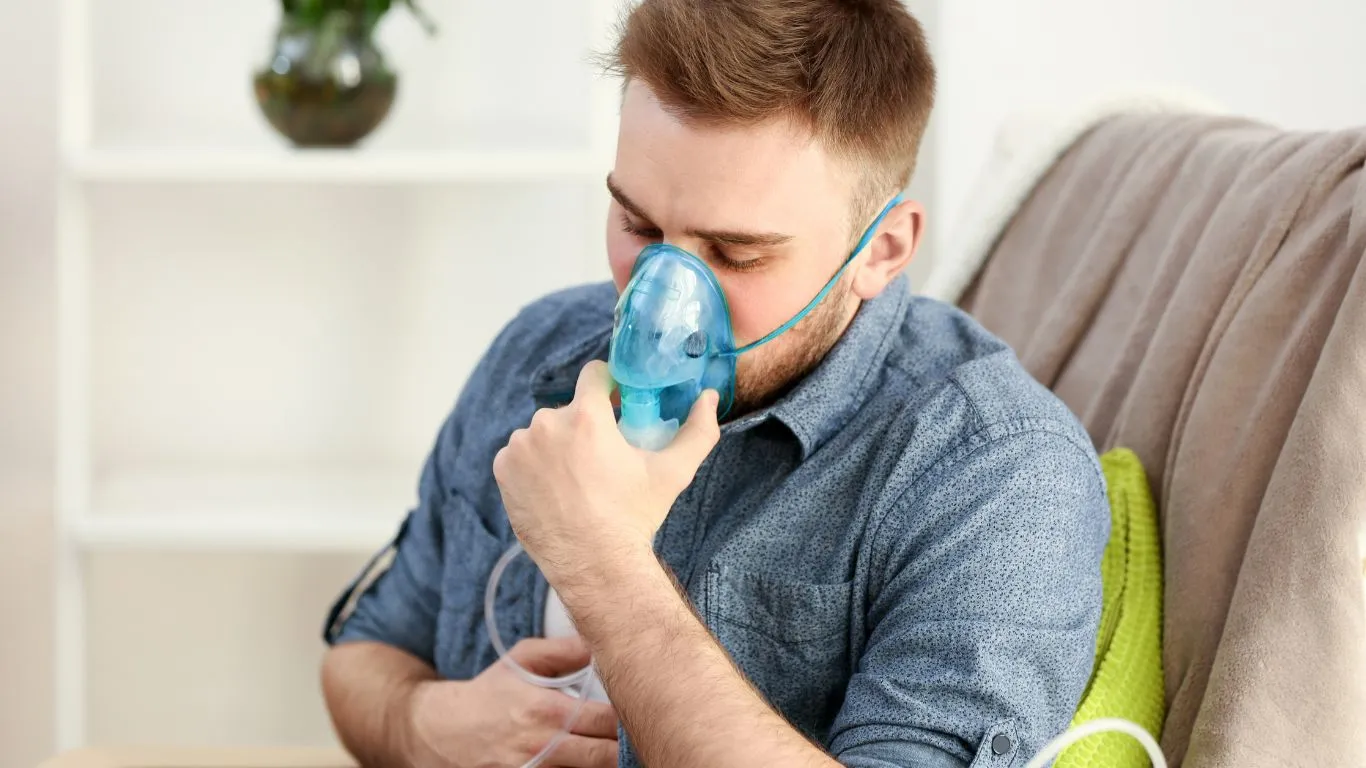How to Manage Asthma Without Medications and Breathe Easier
If you’ve ever asked yourself how to manage asthma without medications, you’re definitely not alone. As a pulmonary nurse practitioner, I’ve met countless patients—young and old—who feel overwhelmed at the idea of depending on inhalers or pills forever. Now, don’t get me wrong, medications can be life-saving, but there’s a whole world of natural strategies that can help reduce flare-ups, improve lung function, and give you back a sense of control. And trust me, I’ve seen firsthand how lifestyle tweaks and holistic care can make a dramatic difference.
Understanding Your Asthma Triggers

Let’s start with the foundation: triggers. One of the biggest favors you can do for your lungs is learning what sets off your asthma in the first place. That might sound basic, but you’d be surprised how many patients haven’t connected the dots between their environment and their symptoms. I remember working with a teacher who thought her asthma was just “seasonal,” only to find out that the whiteboard markers she used daily were the real culprit.
Common triggers to watch out for:
- Dust mites
- Mold and mildew
- Pet dander
- Pollen
- Cold air
- Smoke (including incense and candles!)
- Strong cleaning products
Pro tip: Keep a journal or use a tracking app to log symptoms and surroundings—it can be an eye-opener!
Optimizing Indoor Air Quality

Most of us spend about 90% of our time indoors, and if you’ve got asthma, that’s a big deal. Clean, breathable air makes a massive difference. I’ve had patients make just a few changes at home and report feeling better in a week.
Here’s how to breathe easier indoors:
- Use a HEPA filter. Invest in a good air purifier, especially in the bedroom where you spend most of your downtime.
- Keep humidity in check. Aim for 30–50%. Too much moisture invites mold, and dry air can irritate your airways.
- Clean smart, not hard. Swap out harsh cleaners for fragrance-free, non-toxic options. Vinegar and baking soda work wonders.
- Declutter. Less stuff means fewer places for dust to hide. Minimalism for the win!
Nutrition: Fuel for Better Breathing

I can’t emphasize this enough—what you eat truly matters when it comes to managing asthma symptoms. I’ve worked with several patients who noticed fewer flare-ups simply by changing their diet. No magic pills, just better choices.
Foods that can help reduce inflammation:
- Fatty fish like salmon or sardines (hello omega-3s!)
- Leafy greens and cruciferous veggies like kale and broccoli
- Colorful berries—antioxidants galore
- Turmeric and ginger—nature’s anti-inflammatory duo
On the flip side, try to limit processed snacks, sugary drinks, and fried foods. I know it’s hard (believe me, I’ve had my fair share of late-night fast food runs), but your lungs will thank you in the long run.
Drink water like it’s your job
Seriously. Staying hydrated helps keep your airways moist, which can reduce irritation and mucus buildup. Aim for at least 8 glasses a day—more if you’re active or live in a dry climate.
Stress and Asthma: A Real Connection
If there’s one thing I’ve learned in all my years working with asthma patients, it’s this—your emotional state has a real impact on your breathing. Stress doesn’t just mess with your head, it can tighten your airways, make you feel more anxious, and create a vicious cycle.
Here’s what I suggest:
- Practice deep belly breathing. Even just five minutes a day can calm your nervous system.
- Try guided meditation or yoga. Apps like Calm or Insight Timer are super helpful.
- Don’t ignore emotional health. Counseling or support groups can be game-changers.
I’ve had a teenage patient who would get attacks right before exams—once we introduced breathing techniques and mindfulness, her symptoms were cut in half. Not everything needs a prescription.
Building an Asthma-Friendly Fitness Routine

Now, I know the idea of exercising with asthma can sound intimidating. I’ve heard it so many times—”But Bianca, I get out of breath just walking to the mailbox!” Trust me, I get it. But here’s the deal: the right kind of exercise can actually strengthen your lungs and reduce how often you feel breathless. I’ve coached plenty of patients through this, and with a slow and steady approach, they surprised even themselves.
Start simple, stay consistent:
- Walking: An underrated gem. Even 20 minutes a day can make a huge difference.
- Swimming: Warm, moist air is easy on the lungs—and it’s a full-body workout.
- Yoga and tai chi: Focused breathing meets gentle movement. A double win for asthma control.
- Low-impact strength training: Keeps your body strong without overloading your lungs.
Just remember to warm up slowly, cool down gently, and always listen to your body. And hey, keep that rescue inhaler nearby just in case—it’s not cheating, it’s being smart.
Harnessing the Power of Breathing Techniques

When it comes to how to manage asthma without medications, learning how to breathe better is seriously underrated. Most of us never think about our breathing until it’s a problem, but practicing intentional breathwork can train your body to stay calmer and more in control during flare-ups.
Techniques worth trying:
- Pursed-lip breathing: Inhale through your nose, exhale slowly through pursed lips. Helps slow your breathing and keep airways open.
- Diaphragmatic (belly) breathing: Breathe deeply into your abdomen, not your chest. It promotes full oxygen exchange and reduces effort.
- Buteyko method: A structured breathing program that focuses on nasal breathing and reducing hyperventilation.
Many of my patients find these practices not just helpful for asthma, but calming for anxiety, too. One guy I worked with started doing pursed-lip breathing during traffic jams and swore it changed his life. Breathing isn’t just survival—it’s a skill.
Natural Remedies and Holistic Approaches

Alright, let’s talk about some natural tools and holistic strategies that can support your lungs. Again, these aren’t miracle cures, but they can work beautifully alongside lifestyle changes. I’m big on blending clinical knowledge with practical wellness tools—because in the real world, people need both.
Some options worth exploring:
- Essential oils (with caution): Eucalyptus and peppermint can help open airways, but always use a diffuser and check for personal sensitivity first.
- Herbal teas: Ginger, licorice root, and mullein leaf are often used for respiratory support.
- Salt therapy: Also known as halotherapy. It involves inhaling microscopic salt particles in a controlled space—some people swear by it for easier breathing.
- Acupuncture: Not for everyone, but a few of my patients have found it helpful for stress-related asthma symptoms.
Important reminder: Always talk with a licensed professional before starting herbs or alternative therapies, especially if you’re still using conventional medications. Safety first, always.
Creating a Supportive Lifestyle
Let’s be real—managing asthma without meds isn’t just about clean air and veggies. It’s about setting up your whole lifestyle to support your lungs. That includes your routines, relationships, even the way you respond to challenges.
Here’s what helps my patients stay on track:
- Set up routines that include regular movement, sleep, and check-ins with how you’re feeling.
- Build a support system—family, friends, maybe even an online group of fellow asthma warriors.
- Stay curious and informed. The more you understand your body, the more empowered you feel. Ask questions. Keep learning.
Honestly, one of my favorite moments as a pulmonary NP is when a patient comes back and tells me, “I actually feel in control now.” It’s not about perfection. It’s about progress. Every step you take to understand and support your lungs adds up—big time.
Environmental Tweaks That Make a Big Difference

When people ask me how to manage asthma without medications, one of the first things I suggest is looking around their daily environment. You’d be amazed how many triggers are hiding in plain sight. And I’m not talking about extreme renovations—just small, smart changes that stack up over time.
Simple adjustments that support your lungs:
- Switch to fragrance-free products: That “fresh linen” scent might actually be doing more harm than good. Opt for unscented laundry detergents, soaps, and lotions.
- Replace old pillows and mattresses: Over time, they become breeding grounds for dust mites. If replacing isn’t an option, use allergen-proof covers.
- Keep windows closed during high pollen seasons: And consider using blackout curtains that trap dust instead of sheer ones that just wave it around.
- Declutter and clean smart: Fewer knick-knacks = fewer surfaces for dust to settle. Use damp cloths when cleaning to avoid stirring up particles.
One of my patients swapped out her fabric curtains and added a basic air purifier in the living room—she said it was the first time she’d gone a week without needing her rescue inhaler. Sometimes, it really is the little things.
When to See a Specialist

Alright, let’s talk real for a second. While natural strategies are powerful, knowing when to reach out for medical guidance is just as important. Managing asthma without medications doesn’t mean ignoring red flags—it means staying proactive and informed. You’re the expert on your body, but a good provider is your backup support.
Here are signs you should check in with a specialist:
- You’re waking up at night due to coughing or wheezing more than twice a week
- You’re using your rescue inhaler more than twice a week (even if it’s just a puff)
- Normal activities feel harder than usual
- You’re experiencing frequent chest tightness or a drop in peak flow readings
I’ve had patients who tried to tough it out on their own, only to land in the ER. That’s the last place we want you. Working with a pulmonologist or asthma educator can help you find a personalized plan—especially if you want to reduce or avoid medications safely.
Empowering Yourself with Education
This might sound cheesy, but knowledge really is power when it comes to managing asthma naturally. The more you understand what’s happening in your body, the less scary it feels—and the more capable you become at handling symptoms when they show up.
Here’s how to stay informed without getting overwhelmed:
- Stick to trusted sources: Websites like AAFA (Asthma and Allergy Foundation of America) and American Lung Association are packed with science-backed info that’s easy to digest.
- Ask questions during appointments: No question is too small. If you’re confused about something, bring it up!
- Join support communities: Sometimes just hearing “me too” can make all the difference. Online forums, local meetups, and even social media groups can be helpful.
In clinic, I always tell my patients: you don’t have to know everything, but you should understand your own story. What triggers you, what calms you, what works for your lifestyle. That’s where true asthma control lives.
Wrapping It All Together
Managing asthma without medications isn’t about being anti-medicine—it’s about being intentional. It’s about choosing to live in a way that supports your lungs, reduces inflammation, and keeps you out of crisis mode. It’s layered. It’s personal. And honestly, it’s totally doable.
I’ve watched patients—from busy parents to retired athletes—completely change their asthma game just by paying attention, asking for help, and making small but mighty shifts in their daily lives. If you’ve made it this far into the article, I hope you feel a little more hopeful and a lot more empowered.
Because at the end of the day, asthma doesn’t have to run your life.
References
- Asthma and Allergy Foundation of America
- American Lung Association
- National Heart, Lung, and Blood Institute
Disclaimer
This content is intended for informational purposes only and should not be taken as medical advice. Please consult your healthcare provider before making any changes to your asthma management plan. What works for one person may not work for another, and safety always comes first.

Bianca Nala is a compassionate Nurse Practitioner with a strong background in primary and respiratory care. As a health writer for Healthusias.com, she combines her clinical expertise with a talent for clear, relatable storytelling to help readers better understand their health. Bianca focuses on topics like asthma, COPD, chronic cough, and overall lung health, aiming to simplify complex medical topics without losing accuracy. Whether she’s treating patients or writing articles, Bianca is driven by a single goal: making quality healthcare knowledge accessible to everyone.






